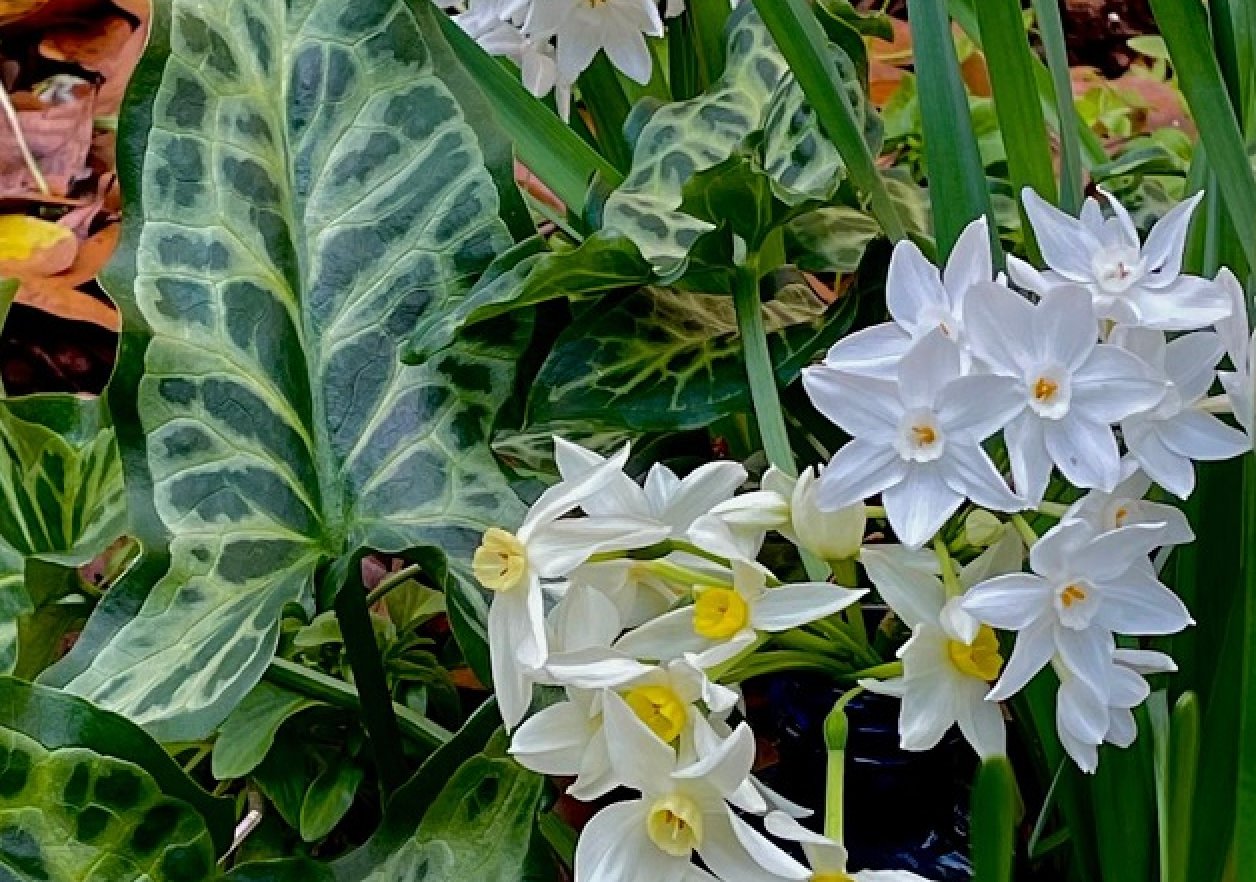In the Garden with Felder
This midwinter I’m enjoying a couple of classic Southern bulbs from the gardens of my great-grandmother and two grandmothers, and which come up every fall and grow through the worst winters. With no care whatsoever.
Both fill gaps left when hostas, lantanas, mums, and other summer perennials go dormant in the fall; both die down just as the summer stuff starts poking back up in the spring.
Both grow equally well even along the Gulf Coast, in sun or shade, and are actually, not just reportedly, deer proof; in fact, they are poisonous, so just grow them, don’t cook them. Both multiply and slowly spread around, which to me means more to share with other gardeners; I usually dig and divide them when their leaves begin dying down in the spring.
One is the common “paperwhite” daffodil commonly seen in older gardens, spread naturally around abandoned old homesites, and even cemeteries. This year my earliest varieties started opening clusters of intensely-fragrant white flowers on Thanksgiving, but are always full-blown by Christmas. Some folks insist they are the true Narcissus, but truth is, Narcissus is the Latin name for all daffodils, which is an English folk name for Narcissus. Don’t get me started on what jonquils are, though a hint is the thin, reedy foliage of these sweetly-fragrant, always-yellow daffodils looks like pointed quills.
To those who are curious, the earliest paperwhites are Narcissus papyraceus, with rounded petals and white to pale yellow cups, and N. italicus with longer, pointed star-like petals and richer yellow cups. Soon to open will be my Chinese Sacred Lily (N. tazetta) with golden yellow, sometimes nearly orange cups.
If you really want to get into growing them, also look online for these tried-and-true cultivars which never fail to flower and increase every year: Grand Primo, Avalanche, Early Pearl, the double-flowering Erlicheer with tight rosebud-like white flowers, and two favorites with all-yellow flowers, Grand Soleil d’Or and Golden Dawn.
My other winter-terrific passalong bulb is the “painted Arum” (Latin name: Arum italicum pictum); its arrowhead shaped leaves, which emerge late in the fall, are glossy green with showy variegated streaks of pale green stripes. The Mediterranean bulb is related to our native jack-in-the-pulpit; its unique hooded flower, looking just like that of the tropical potted plant called peace lily, cups around a central spire that produces a stem of red berries which persists long after leaves die down in the spring. Here’s something weird: Its flowers produce heat and a malodorous stench that attract pollinating flies.
Got them? Share them. Ain’t got? Find someone who does, to share theirs.
Side note: The other day someone posted a photo of some midwinter, cotton-like seedpods on the Mississippi Gardening Facebook page, asking for help with identification. Several astute gardeners replied that they were from confederate rose, a shrubby perennial mallow with big double Autumn flowers that open white and turn to pink then red.
But the original poster said, “Nope. I grow that plant, and it isn’t.” But then he did some background reading and found out that yeah, it is. Chagrined, he admitted with a prostrating tone that he was wrong, then posted another note calling himself an arrogant idiot. And, in the spirit of schadenfreude in which folks find humor in the “oops” failure of another person, everyone agreed.
The original poster who admitted he was wrong about something very common was me, an expert who doesn’t know it all, not even what’s in his own garden.
So there, I admit I am not only sometimes confidently mistaken, but also willing to admit it, and learn.
Felder Rushing is a Mississippi author, columnist, and host of the Gestalt Gardener on MPB Think Radio. Email gardening questions to rushingfelder@yahoo.com.

